Update: Your Action for the Earth is Required
I wish I didn't have to write this.
Have you ever been to a place in nature that just felt good?
What about one that actually didn’t feel so awesome?
I’ve experienced both.
When I’m somewhere in the wild world that just feels good, it’s because everything is alive. I can sense the joy of the land itself. The ripples of ecosystems from the physical to the energetic, vibrating with a web of life and natural harmony.
The effects of being in this kind of space are powerful. I feel my soul being restored on the deepest levels. My nervous system relaxes. I remember the goodness of this planet, no matter how chaotic the outside world appears.
But other places in the wild world don’t quite feel so good. They still carry the gifts of nature…but something is off.
It feels like part of those layers of ecosystems are missing — like the soul of the land has been wounded in some way. This doesn’t have the same effects.
Rather than feeling restored and reminded of the infinite beauty, vibrancy, and creative life force of the Earth…I feel the wounding in my own being. The deep connection I have with the Earth — that we all have with the Earth — means that we all feel the Earth’s pain in our own systems.
So what’s the difference? What makes a place healing versus a bit wounded?
It’s the presence of humans upon that land. The history of how that land has been treated.
Has it been tended and loved, left alone, seen as sacred, and respected? Or has it been taken for granted and abused with the overextraction of resources replaced by human waste?
I’ve often mentioned that I can feel the lasting effects of the colonial settlers in Bend. This town I live in was founded by the logging industry.
Now please know that I’m not some Pollyanna who thinks we’re going to magically build homes of adobe and stop shipping in cardboard boxes or printing with paper. I believe a better way is possible, but I’m grounded in the reality of the present moment and obstacles we still face. For now, human survival depends on the logging industry — but dear god can we make it more sustainable?
But the way in which this history unfolded on this land is truly atrocious: The American logging frontier was essentially a wave of extraction that began on the Atlantic seaboard, crested over the Great Lakes, and rolled into the Pacific Northwest. By the early 20th century, redwoods and coastal forests were being leveled at astonishing speed. Clearcutting and high-grading (taking only the best, largest trees) dominated.
These practices left behind degraded land, eroded soils, fire-prone landscapes, and struggling communities once the timber ran out.
And you know what? This wasn’t done by a lack of understanding of these effects. Logging companies knew damn well that they were destroying local ecosystems and didn’t care (written records of this exist as early as the mid 1800s). They kept going, clear-cutting more new territory — because it was cheaper and easier than trying to be sustainable.
(And that’s the thing about privatization — the bottom line always goes back to profit and ease, no matter how much you think you can have the privilege to “vote with your dollar” and force public opinion.)
Today, those of us who are sensitive can feel the echoes of this abuse, even amidst the resilience and beauty that is still here.
Again — I’m not saying that we must cease all logging. But this extractive consciousness, profit-first and screw future generations, has to change.
One of the many lasting effects of the logging industry’s presence here are the old logging roads.
I’ll be honest — these definitely have their perks. They’ve become 4WD roads to hidden camping spots and stunning views. There is almost nothing I love more than a weekend of dispersed camping in our old Xterra.
But…a lot of these roads crisscross forested land in a jarring way. They aren’t beautiful winding roads through mountain landscapes — they are dusty drives through thinned forests where the largest trees might only be 30 years old.
The original ecosystems of this area have been eradicated. What’s left is something new and young. Not yet full and healthy enough to be prepared for the effects of a warming climate and more dangerous fire seasons. Not thick and full enough to provide wildlife a truly healthy and happy home. No longer diverse enough to have the resilience that ecological diversity brings.
And they’re full of trash.
Shot out beer cans seem to be a favorite.
But the toilet paper…can’t ignore that one.
(The irony of littering logged land with the corpses of trees used to wipe our assholes is not lost on me.)
But let’s go back to the places that feel good. There are already old roads, no longer used for forestry but mostly for recreation or forest service work.
And then there are vast swaths of land only accessible by trail. And even more without any roads or trails at all — a rare gem in this day and age, where the Earth gets to express her fullness without human intervention.
These places feel good.
And they are under attack. No surprise there :(
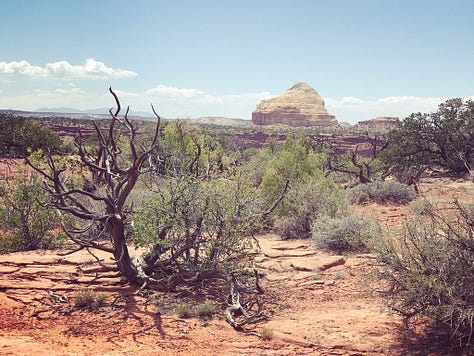
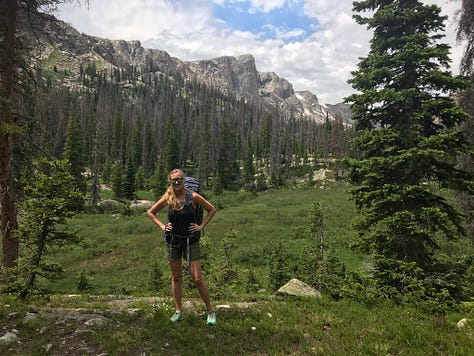
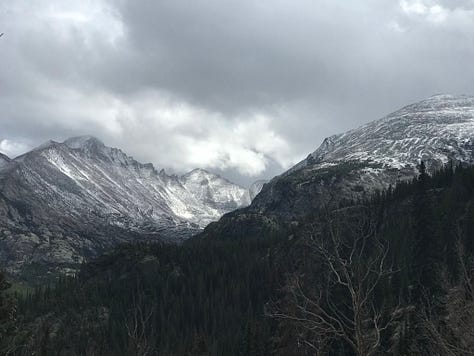
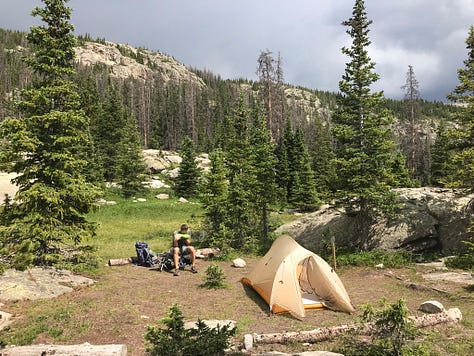
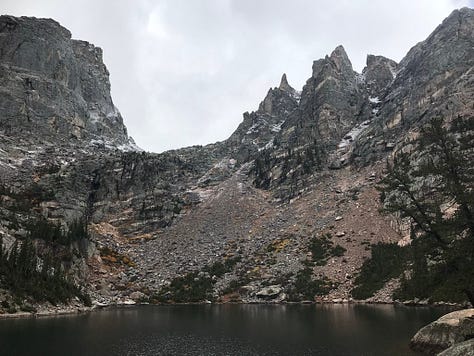
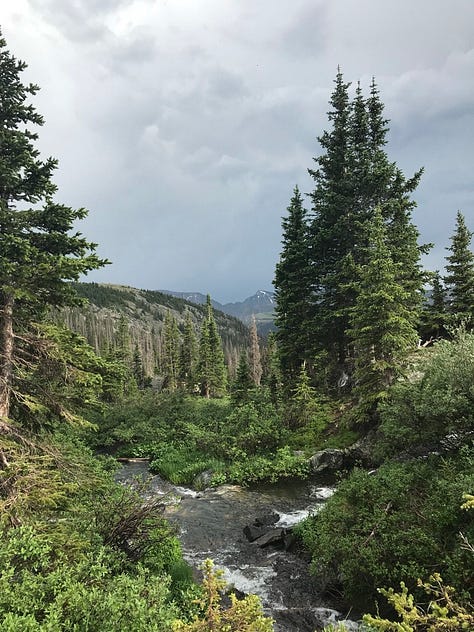
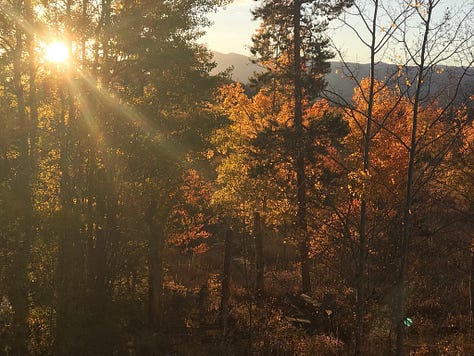
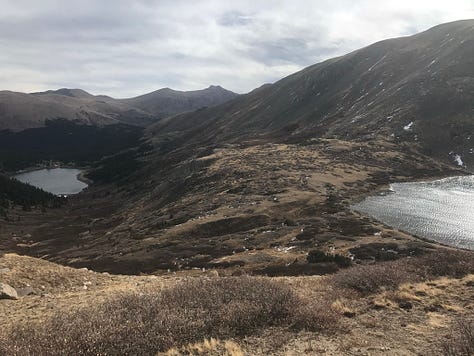
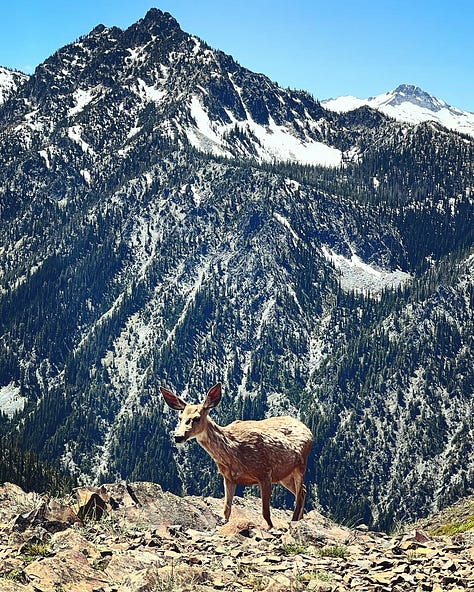
The Latest Assult on Our Public Lands
In 2001, I was in college studying environmental law in Washington State.
(My nervous system couldn’t handle arguing with people who wanted to hurt the Earth so I switched to the ever-employable combo of psychology and art. But I spent a couple years as a polysci major first.)
If you’ve been tracking the current administration’s numerous attempts to sell off public land, you’ll recognize this year: it’s when the Roadless Rule was finally passed.
I remember sitting in college classes listening to people argue about this rule back then. It seemed too obvious and important to me — I could not imagine living in a world where there are no remaining bastions of original ecology. No places where animals can live as they were born to do.
No places where the soul of the land is whole — though I couldn't very well use that as an argument in a political class.
The passing of this ruling was a massive undertaking and wild — literally wild — success.
For the past 25 years ecosystems that were whole have been saved. Ecosystems that were damaged have had time and space to recover.
And millions of humans have enjoyed the gift of truly wild places — again, already accessible through old forest roads and trails. Millions of humans are able to remember that we can have a good relationship with our planet. That this Earth is beautiful and worthy of our care.
It is in the DNA of every human on this planet to need a wild communion with the Earth. Our ancestral ways of life may have changed over the years, yet the foundational need to access the wild beauty of the natural Earth will always live within our bodies, psyches, and souls.
Over 58 million acres are protected under the Roadless Rule. This protected area offers humans:
43,826 miles of trails
11,337 climbing routes
20,298 mountain biking trails
1,000+ whitewater paddling runs
Clean drinking water to more than 60 million people in 3,400 communities across 33 states
Not to mention the protection of over 2100 endangered and threatened species.
And the fact that healthy, old-growth forests are important carbon sinks. (See original source for more stats.)
So what’s happening now?
Right now, the U.S. Department of Agriculture (USDA) is moving to repeal the Roadless Rule.
Please understand: This isn’t a partisan issue. Though there are clear party lines on who is attempting this repeal in Washington, we are all impacted by this. And no one, no matter who you voted for, actually wants our public lands to become more inaccessible to recreation or more unhealthy across the board.
Hunters and fishers, conservationists and wildlife protectors, anyone who likes to hike or go to a lake for God’s sake — everyone needs to comment during the public comment window.
This administration has launched an unusually fast-moving federal process that includes a shortened public comment period ending September 19, 2025. (This commenting period is usually 30 days…we get two weeks???)
The primary targets affected the proposed repeal are Washington, Oregon, California, Idaho, Montana, Wyoming, Colorado, and Alaska. (Look familiar? It’s been less than a month since we’ve had to rally to stop the sale of all these public lands. Here we go again…)
Think watersheds in Yellowstone, Cascadian lakes in Oregon, epic hikes in alpine Colorado and Washington, native lands and cultural sites in Alaska, and soooo much more.
But even if you live in another state or don’t frequent these lands yourself — you are impacted and need to comment. The ecological health of these massive swaths of land has ripple effects across the country (not to mention precedents set around the places you care about being sold off or privatized).
Please make your voice heard. I know it seems hopeless. But we have always had to fight against the industrial-political complex when it comes to the Earth. This is what being a true Earth ally and real spiritual warrior is all about.
Note: One of the big talking points in favor of this repeal is wildfire prevention.
Let me just tell you, my city was ranked #3 for worst air quality due to wildfires last year. Sometimes it seems like summer isn’t a season so much as a smokey hibernation. I get the wildfire danger.
And: Most fires do not originate in wilderness or roadless areas. They are four times more likely to start near roads.
And: There are already exceptions to the Roadless Rule for fire mitigation!!! This talking point is a distraction that preys upon our fears in order to fuel a private agenda rather than the public good.
What You Can Do
What do to do next: Comment.
Rather than go over all the instructions and talking points myself, I want to point you to an excellent resource: https://www.madeleinewilson.org/post/roadless-rule-public-comment-guide
Go there. Then comment here: https://www.regulations.gov/document/FS-2025-0001-0001/comment
And leave comments with your favorite resources below! I’d love to link to other Substacks like this one that are sharing information on this topic.
A few reminders and updates:
For those craving a container of goodness while the world burns, consider joining Cultivating a Featherlight Heart. We begin September 14th and the course is 30% off right now. (Nothing I created exists separate from the Earth. Even these ideas will help you deepen into reverent relationship with the land.)
For those who wish to learn the art of psychopomp, which can be a helpful practice in the wake of ecological destruction, join the waitlist for this year’s training.
For those who want a yearlong initiation into becoming an Earth ally in partnership with spirit, becoming a healer whose work matters, the Wild Alchemy Practitioner Program is coming in 2026. Stay tuned or reach out with questions.
Juniper Stokes is a scent priestess, botanical perfumer, soul alchemist, and rewilding guide through mythic landscapes of the nature, spirit, and the cosmos. For over 25 years, she has been guiding soulful humans back to the heart of who they are and why they’re here.
🌿 Explore workshops & trainings.
💠 Find alchemical aromatics in The Botanica.
💌 Subscribe for new writings & invitations:



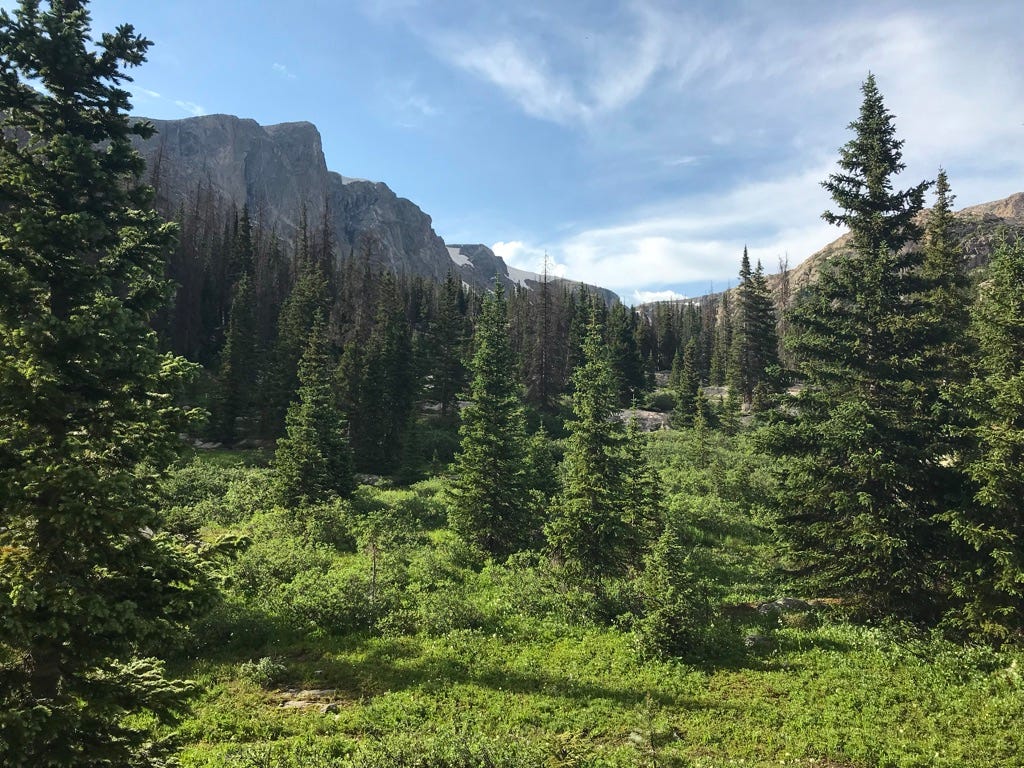


Thank you for this - I just submitted a comment 💔 🌲 🌳
Every little action each one of us takes adds up. Each voice counts.